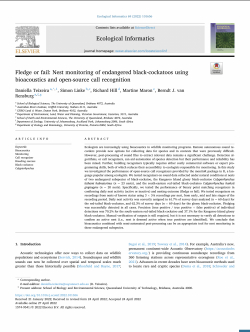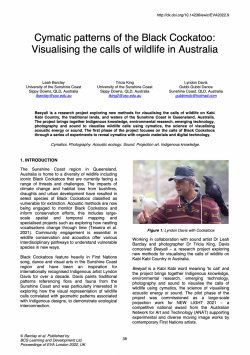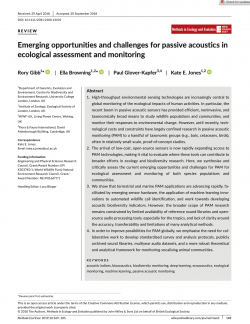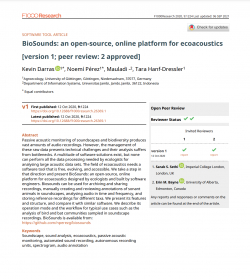Fledge or fail: Nest monitoring of endangered black-cockatoos using bioacoustics and open-source call recognition

Type
Journal
Authors
Teixeira ( Daniella Teixeira )
Linke ( Simon Linke )
Hill ( Richard Hill )
Maron ( Martine Maron )
van Rensburg ( Berndt J. van Rensburg )
Category
Article
[ Browse Items ]
Publication Year
2022
Publisher
Ecological Informatics, United States
URL
[ private ]
Volume
69
Abstract
Ecologists are increasingly using bioacoustics in wildlife monitoring programs. Remote autonomous sound recorders provide new options for collecting data for species and in contexts that were previously difficult. However, post-processing of sound files to extract relevant data remains a significant challenge. Detection algorithms, or call recognizers, can aid automation of species detection but their performance and reliability has been mixed. Further, building recognizers typically requires either costly commercial software or expert programming skills, both of which reduces their accessibility to ecologists responsible for monitoring. In this study we investigated the performance of open-source call recognizers provided by the monitoR package in R, a language popular among ecologists. We tested recognizers on sound data collected under natural conditions at nests of two endangered subspecies of black-cockatoo, the Kangaroo Island glossy black-cockatoo Calyptorhynchus lathami halmaturinus (n = 23 nests), and the south-eastern red-tailed black-cockatoo Calyptorhynchus banksii graptogyne (n = 20 nests). Specifically, we tested the performance of binary point matching recognizers in confirming daily nest activity (active or inactive) and nesting outcome (fledge or fail). We tested recognizers on recordings from nests of known status using 3 × 3-h recordings per nest, from early, mid and late stages of the recording period. Daily nest activity was correctly assigned in 61.7% of survey days analysed (n = 60 days) for the red-tailed black-cockatoo, and 62.3% of survey days (n = 69 days) for the glossy black-cockatoo. Fledging was successfully detected in all cases. Precision (true positive / true positive + false positive) of individual detections was 70.2% for the south-eastern red-tailed black-cockatoo and 37.1% for the Kangaroo Island glossy black-cockatoo. Manual verification of outputs is still required, but it is not necessary to verify all detections to confirm an active nest (i.e., nest is deemed active when true positives are identified). We conclude that bioacoustics combined with semi-automated post-processing can be an appropriate tool for nest monitoring in these endangered subspecies.
Description
https://doi.org/10.1016/j.ecoinf.2022.101656
Number of Copies
1
| Library | Accession No | Call No | Copy No | Edition | Location | Availability |
|---|---|---|---|---|---|---|
| Main | 609 | 1 | Yes |




